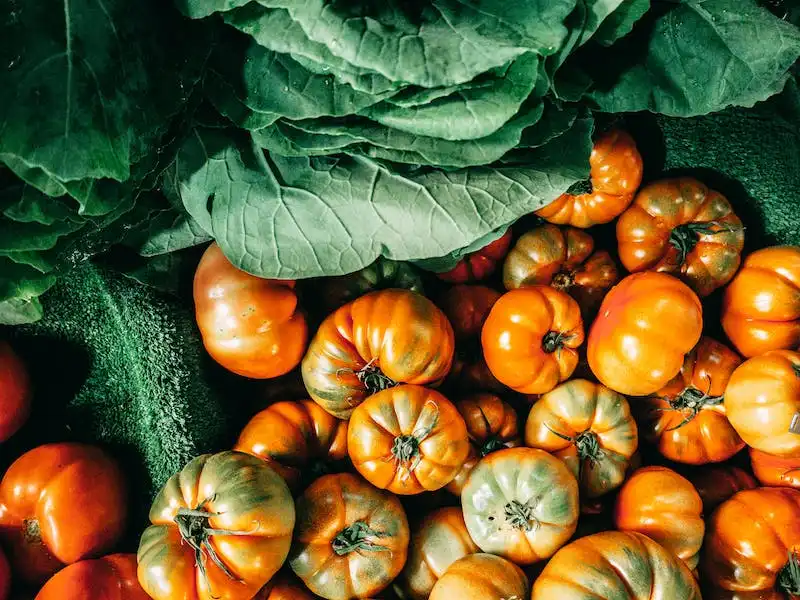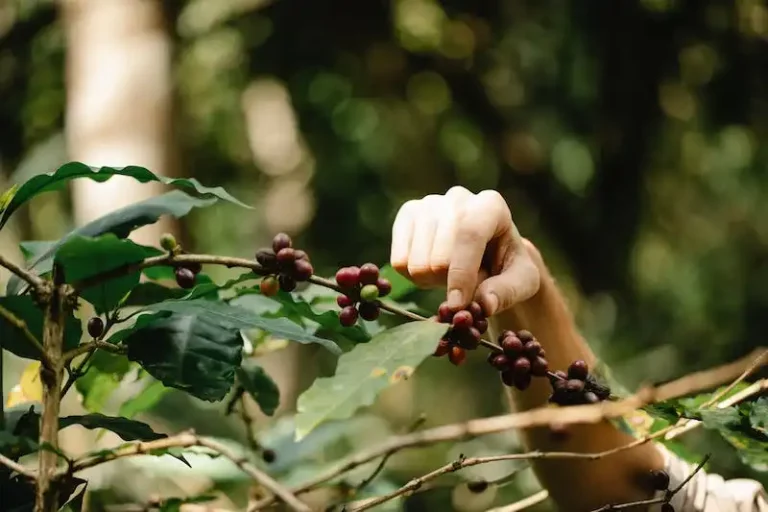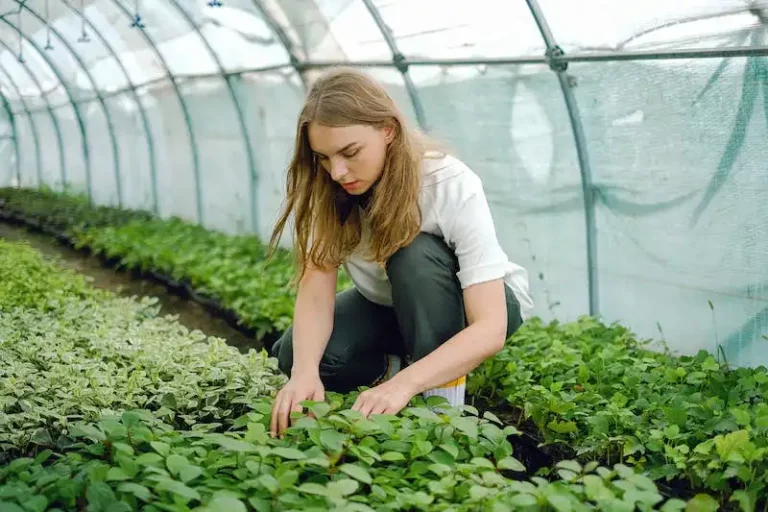On fertile and well-drained soils, cauliflower can be grown as a main-season crop. The plant takes around 65-75 days from planting to harvest. It often requires light and cool weather, and can be grown in various types of soils. The row spacing is usually 18-24 inches apart, with 12-15 inches between plants within a row. This vegetable is also called “cabbage flowers” because they are considered a variety of cabbage.
There are different types of cauliflower. The most common ones include snowball cauliflower and graffiti cauliflower. Snowball cauliflower has a medium to large head, is white in color, and it is ready to harvest soon after blanching. Graffiti cauliflower, on the other hand, has a vibrant green or purple hue and provides a unique visual appeal to dishes. Both types require enough thinning to provide each plant with ample space.
Cauliflower plants are often attacked by aphids and beetles. In order to protect the crops from these insects, it is necessary to treat them with insecticidal solutions. Thinning during the growing season is also recommended to help improve the quality of the cauliflower head. Watering the plants during dry periods and fertilizing them with a balanced fertilizer can also promote their growth.
Cauliflower is a cool-season crop that is best grown in very cool climates. It is worth noting that cauliflower is more susceptible to heat stress. The plants prefer higher moisture levels in the soil and cool temperatures during the growing season. During winter, you can store cauliflower heads to enjoy them later. If properly stored, they can last for several weeks.
If you have any questions about growing cauliflower, you can consult the gardening experts at UF/IFAS. They can provide more information and clarify any doubts you may have. The self-harvest option is also available for readers who prefer to grow their own vegetables. Overall, growing cauliflower can be a rewarding experience for those who appreciate this nutritious and versatile vegetable.
Clarify Cauliflower Treated Seed
In the world of cauliflower gardening, one of the most important factors to consider is the type of seed you are using. Cauliflower seeds come in different varieties, and one type that gardeners frequently opt for is treated seed.
Treated seed refers to seeds that have been coated with a protective layer, usually made of fungicides, insecticides, or other chemicals. This coating helps to safeguard the seed from potential diseases and pests, ensuring a higher chance of successful germination and growth.
What makes treated seed worth considering is its ability to provide added protection and nutrition to the growing plants. During the early stages of growth, the seed coating helps to prevent common pests and diseases, such as cabbage worms and fungal infections. This reduces the need for excessive pesticide use, making it a more environmentally friendly option.
Another advantage of treating cauliflower seeds is the decrease in the chances of nutrient deficiency. The coating contains essential fertilization particles that gradually feed the seedling, promoting healthy development and curd formation.
While treated seed offers various advantages, it is important to remember that it may not be suitable for all gardeners or growing situations. Some gardeners prefer to use untreated seed, which allows for a more natural and organic approach to gardening.
If you decide to use treated seed, there are a few things to keep in mind. It’s crucial to follow the manufacturer’s instructions for planting, as well as any recommended safety precautions. Additionally, treated seed may not be available for all cauliflower varieties, so make sure to check before purchasing.
It’s also worth noting that not all cauliflower varieties are suitable for treating the seed. Some varieties, such as Snowball and Purple of Sicily, are open-pollinated and best grown from untreated seed for optimal results.
Growing cauliflower from treated seed requires careful planning and preparation. Start by properly preparing the soil, ensuring it is well-drained and fertile. Cauliflower is a heavy feeder, so adding organic matter or compost can significantly improve the soil’s nutrient content.
Seeded cauliflower should be started indoors around 4 to 6 weeks before the last expected frost. Once the seedlings have grown to a suitable size, they can be transplanted into the garden. For areas with a longer growing season, cauliflower can be started directly in the garden, typically in late spring or early summer.
When planting cauliflower, space the seeds or seedlings according to the variety’s recommended spacing guidelines. This will ensure that the plants have enough room to grow and develop their characteristic large heads.
During the growing season, cauliflower may need to be protected from pests such as cabbage loopers and flea beetles. You can cover the plants with floating row covers or apply organic mulches to deter these pests.
Harvesting cauliflower heads typically begins around 60 to 80 days after planting, depending on the variety and weather conditions. The heads should be firm and compact, with a white or creamy color. If the heads start to loosen or turn yellowish, it’s a sign of over-ripeness.
In conclusion, treated seed can be a valuable tool for gardeners looking to grow healthy and productive cauliflower crops. However, it’s important to consider the specific characteristics of each variety and choose the best approach accordingly. Whether you opt for treated or untreated seed, proper care and attention are essential for successful cauliflower cultivation.
Source: UF/IFAS Gardening Solutions by MREC.Keres/Shutterstock.com
Description
Cauliflower is a recommended vegetable to grow in your garden. It is a cool-season crop that can be grown from seed. Many gardeners grow different varieties of cauliflower, each with its own unique characteristics.
One popular variety is the snowball cauliflower. It is frequently awarded for its small, light-colored curd. Another variety, called Purple of Sicily, has colourful curds that are harvested in the summer. Clapton is also a popular variety with its green leaves that protect the curd from the sun.
Cauliflower is a crop that requires fertile soil and plenty of water. It is a cabbage family crop and can be prone to some of the same problems as cabbage. One common problem is blanching, which causes the curds to turn yellow. This can be avoided by providing sufficient water and fertile soil. Another problem is sunburn, where the curds turn green. This can be prevented by using plastic or physically shading the curds.
Growing cauliflower from seed requires some preparation. Start by planting the seeds indoors about 4-6 weeks before the last frost date. Once the seedlings are large enough to handle, transplant them into the garden spacing them about 18-24 inches apart. They prefer full sun but can tolerate partial shade.
Cauliflower plants should be fed regularly with a balanced fertilizer to ensure healthy growth. They may also benefit from a higher nitrogen feed once they have formed their heads. The best time to harvest the cauliflower is when the heads are fully developed but still tight. Harvesting should be done in the morning while the heads are cool.
If you have any questions or concerns about growing cauliflower, ask your local gardening center or consult the USDA’s website for more information. Happy gardening!
Seed Characteristics
Cauliflower is a versatile vegetable that comes in many different varieties. Planting cauliflower seeds with the right characteristics can ensure a successful harvest.
When selecting cauliflower seeds, it is important to consider the characteristics of the seeds. The curd, which is the white head of the cauliflower, should be dense and firm. Seeds with a dense curd are more likely to produce a cauliflower head that is both delicious and visually appealing.
The seeds should also be resistant to pests such as aphids. Aphids are small insects that feed on the leaves of cauliflower plants and can cause significant damage. Seeds that are resistant to aphids will ensure that the plants remain healthy and productive throughout the growing season.
The soil in which cauliflower is planted should be well-drained and rich in organic matter. Cauliflower is best suited to cool, moist conditions, and the soil should have a pH level between 6.0 and 7.0. If the soil is too acidic or alkaline, it can impact the growth and development of the cauliflower.
In addition to soil characteristics, it is important to choose cauliflower seeds that are suitable for your garden. Some varieties, like the Snowball and USDA Gardeners’ Award, are well-suited for smaller gardens or container gardening. These varieties have a compact size and produce a medium-sized head, making them ideal for limited space.
Other varieties, like the Graffiti, have a unique purple-pink color and are a popular choice among gardeners looking for something different. These varieties are also well-suited for summer planting, as they can tolerate heat better than other cauliflowers.
When planting cauliflower seeds, it is important to follow the spacing guidelines provided by the seed packet. Most cauliflowers need to be spaced at least 18 inches apart to allow for proper growth and development. This spacing ensures that each plant has enough room to form a large, well-formed head.
Cauliflowers also require blanching to achieve their pure white color. This is done by using a technique called “tying up” or covering the head with a large plastic bag. Blanching protects the head from sunlight and heat, preventing it from turning yellow or green. Not all cauliflower varieties require blanching, so it is important to read the seed packet or ask the supplier for specific instructions.
In terms of seed availability, there is a wide variety of cauliflower seeds to choose from. Some seeds are untreated, while others are treated with fungicides or other solutions to protect against disease. It is important to choose seeds that fit your growing needs and preferences.
After planting the cauliflower seeds, they will take approximately 2-3 weeks to germinate. The plants will continue to grow throughout the winter and can be harvested when the heads are fully formed. The timing of the harvest will depend on the specific variety and the desired taste and texture.
In conclusion, selecting cauliflower seeds with the right characteristics is crucial for a successful and bountiful harvest. By considering factors such as seed type, soil conditions, and planting techniques, gardeners can ensure that their cauliflowers grow well and taste delicious.




